Characterization of the late embryogenesis abundant (LEA) proteins family and their role in drought stress tolerance in upland cotton
- PMID: 29334890
- PMCID: PMC5769447
- DOI: 10.1186/s12863-017-0596-1
Characterization of the late embryogenesis abundant (LEA) proteins family and their role in drought stress tolerance in upland cotton
Abstract
Background: Late embryogenesis abundant (LEA) proteins are large groups of hydrophilic proteins with major role in drought and other abiotic stresses tolerance in plants. In-depth study and characterization of LEA protein families have been carried out in other plants, but not in upland cotton. The main aim of this research work was to characterize the late embryogenesis abundant (LEA) protein families and to carry out gene expression analysis to determine their potential role in drought stress tolerance in upland cotton. Increased cotton production in the face of declining precipitation and availability of fresh water for agriculture use is the focus for breeders, cotton being the backbone of textile industries and a cash crop for many countries globally.
Results: In this work, a total of 242, 136 and 142 LEA genes were identified in G. hirsutum, G. arboreum and G. raimondii respectively. The identified genes were classified into eight groups based on their conserved domain and phylogenetic tree analysis. LEA 2 were the most abundant, this could be attributed to their hydrophobic character. Upland cotton LEA genes have fewer introns and are distributed in all chromosomes. Majority of the duplicated LEA genes were segmental. Syntenic analysis showed that greater percentages of LEA genes are conserved. Segmental gene duplication played a key role in the expansion of LEA genes. Sixty three miRNAs were found to target 89 genes, such as miR164, ghr-miR394 among others. Gene ontology analysis revealed that LEA genes are involved in desiccation and defense responses. Almost all the LEA genes in their promoters contained ABRE, MBS, W-Box and TAC-elements, functionally known to be involved in drought stress and other stress responses. Majority of the LEA genes were involved in secretory pathways. Expression profile analysis indicated that most of the LEA genes were highly expressed in drought tolerant cultivars Gossypium tomentosum as opposed to drought susceptible, G. hirsutum. The tolerant genotypes have a greater ability to modulate genes under drought stress than the more susceptible upland cotton cultivars.
Conclusion: The finding provides comprehensive information on LEA genes in upland cotton, G. hirsutum and possible function in plants under drought stress.
Keywords: Cotton (Gossypium spp); Drought; Gene expression; Gene ontology; Genome; Identification; LEA proteins; miRNAs.
Conflict of interest statement
Ethics approval and consent to participate
No ethical nor consent to participate in this research was sought, this not application in this research work.
Competing interests
The authors declare that they have no competing interests.
Publisher’s Note
Springer Nature remains neutral with regard to jurisdictional claims in published maps and institutional affiliations.
Figures
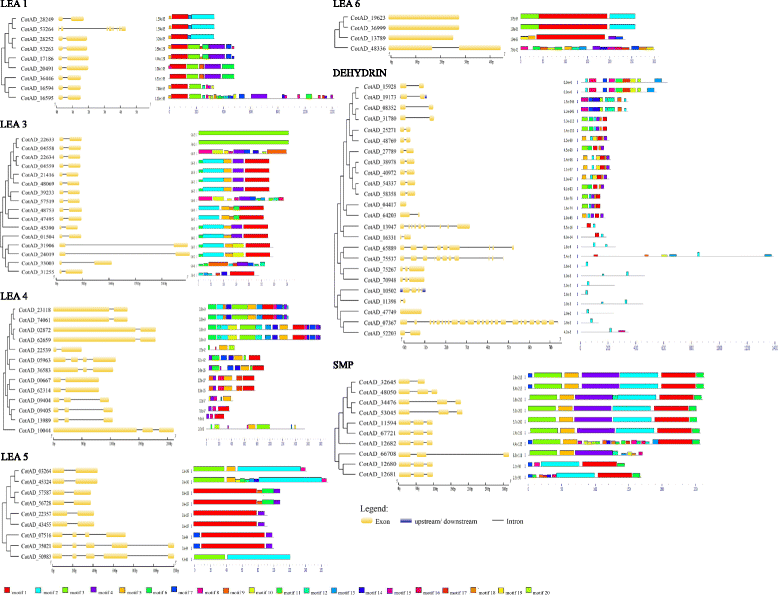
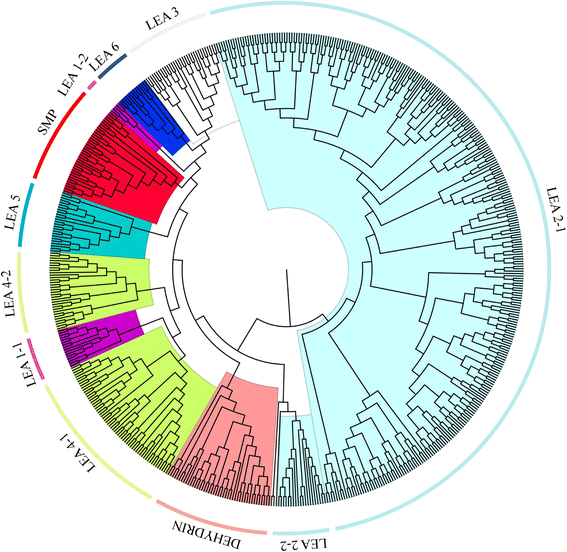
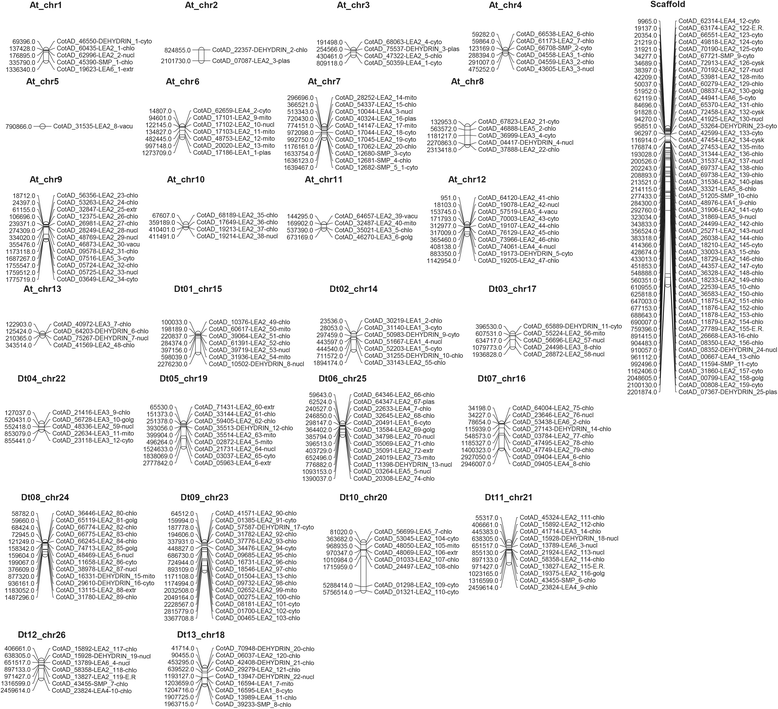
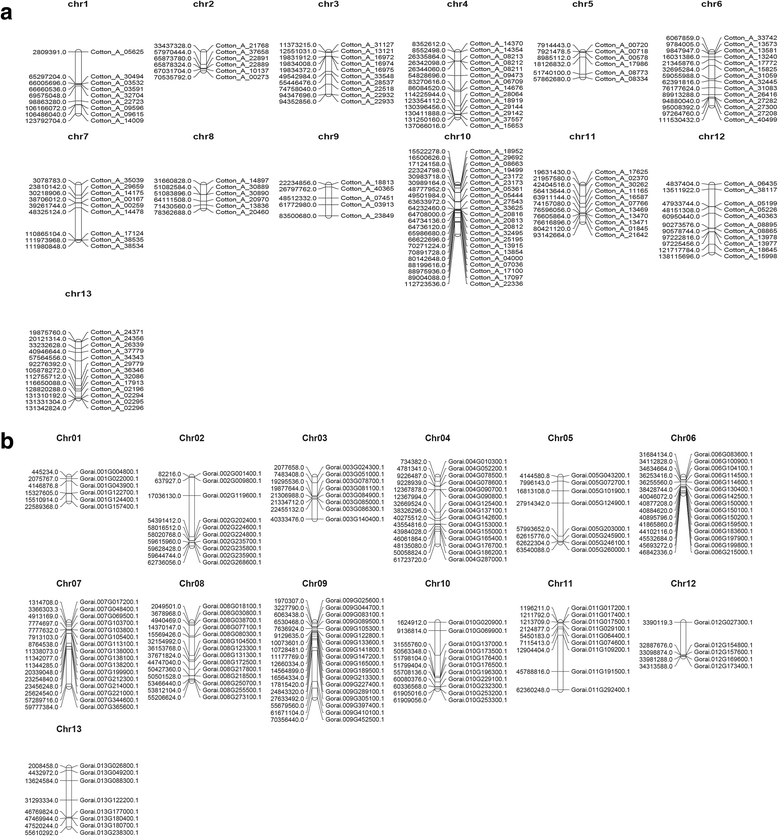
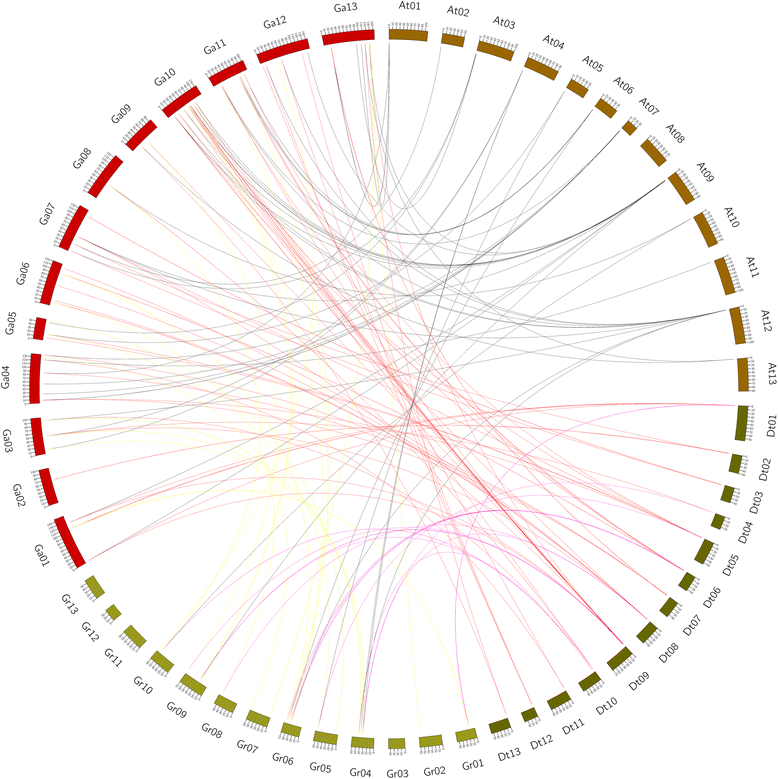
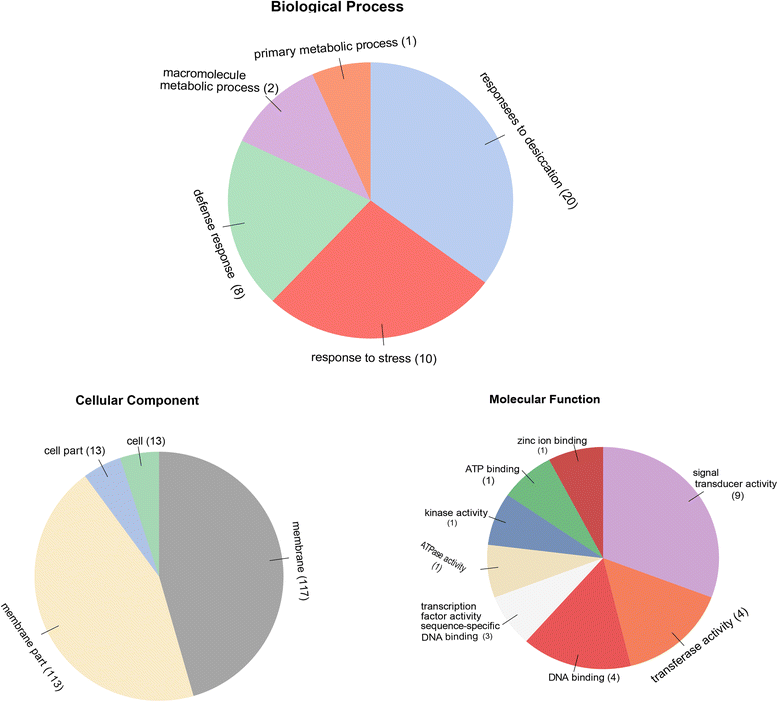
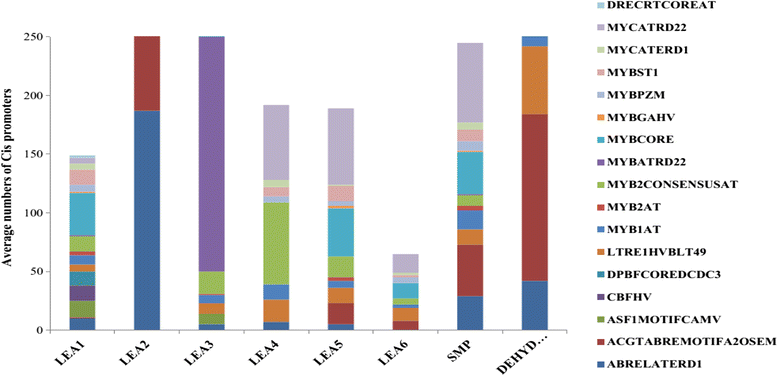
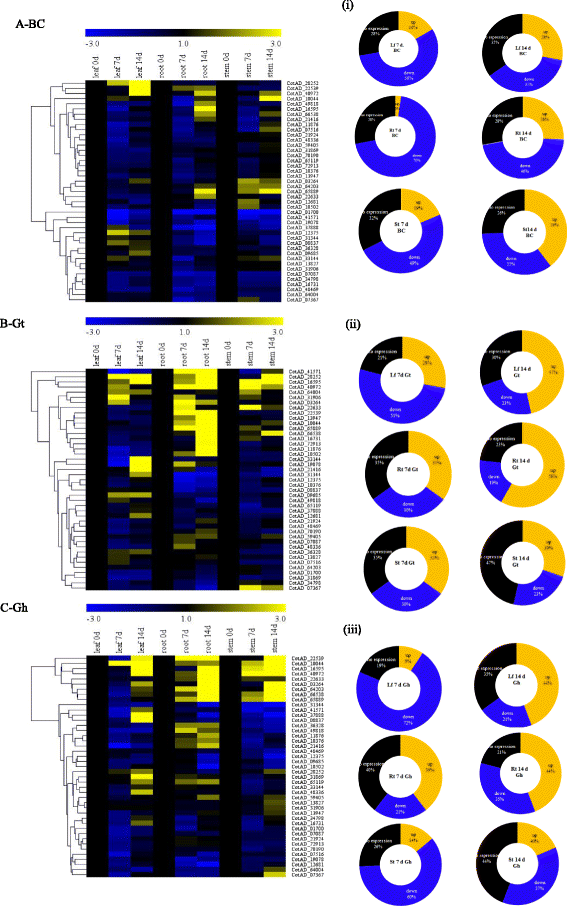
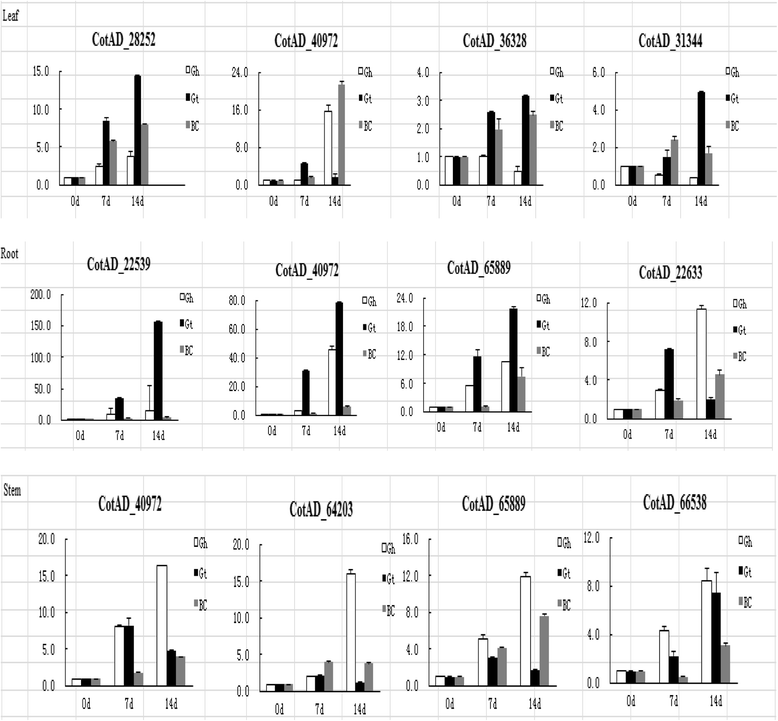
Similar articles
-
Cotton Late Embryogenesis Abundant (LEA2) Genes Promote Root Growth and Confer Drought Stress Tolerance in Transgenic Arabidopsis thaliana.G3 (Bethesda). 2018 Jul 31;8(8):2781-2803. doi: 10.1534/g3.118.200423. G3 (Bethesda). 2018. PMID: 29934376 Free PMC article.
-
Expansion and stress responses of the AP2/EREBP superfamily in cotton.BMC Genomics. 2017 Jan 31;18(1):118. doi: 10.1186/s12864-017-3517-9. BMC Genomics. 2017. PMID: 28143399 Free PMC article.
-
Genome-Wide Analysis of the NF-YB Gene Family in Gossypium hirsutum L. and Characterization of the Role of GhDNF-YB22 in Embryogenesis.Int J Mol Sci. 2018 Feb 6;19(2):483. doi: 10.3390/ijms19020483. Int J Mol Sci. 2018. PMID: 29415481 Free PMC article.
-
Genome-wide expression analysis of phospholipase A1 (PLA1) gene family suggests phospholipase A1-32 gene responding to abiotic stresses in cotton.Int J Biol Macromol. 2021 Dec 1;192:1058-1074. doi: 10.1016/j.ijbiomac.2021.10.038. Epub 2021 Oct 14. Int J Biol Macromol. 2021. PMID: 34656543 Review.
-
Insights into Drought Stress Signaling in Plants and the Molecular Genetic Basis of Cotton Drought Tolerance.Cells. 2019 Dec 31;9(1):105. doi: 10.3390/cells9010105. Cells. 2019. PMID: 31906215 Free PMC article. Review.
Cited by
-
Contrasting roles of GmNAC065 and GmNAC085 in natural senescence, plant development, multiple stresses and cell death responses.Sci Rep. 2021 May 27;11(1):11178. doi: 10.1038/s41598-021-90767-6. Sci Rep. 2021. PMID: 34045652 Free PMC article.
-
The Regulation of Adaptation to Cold and Drought Stresses in Poa crymophila Keng Revealed by Integrative Transcriptomics and Metabolomics Analysis.Front Plant Sci. 2021 Apr 7;12:631117. doi: 10.3389/fpls.2021.631117. eCollection 2021. Front Plant Sci. 2021. PMID: 33897721 Free PMC article.
-
In Silico Characterisation of the Late Embryogenesis Abundant (LEA) Protein Families and Their Role in Desiccation Tolerance in Ramonda serbica Panc.Int J Mol Sci. 2022 Mar 24;23(7):3547. doi: 10.3390/ijms23073547. Int J Mol Sci. 2022. PMID: 35408906 Free PMC article.
-
Genetic dissection of grain iron and zinc, and thousand kernel weight in wheat (Triticum aestivum L.) using genome-wide association study.Sci Rep. 2022 Jul 20;12(1):12444. doi: 10.1038/s41598-022-15992-z. Sci Rep. 2022. PMID: 35858934 Free PMC article.
-
The transcription factor CmLEC1 positively regulates the seed-setting rate in hybridization breeding of chrysanthemum.Hortic Res. 2021 Aug 10;8(1):191. doi: 10.1038/s41438-021-00625-9. Hortic Res. 2021. PMID: 34376645 Free PMC article.
References
-
- Lawlor DW. Genetic engineering to improve plant performance under drought: physiological evaluation of achievements, limitations, and possibilities. J Exp Bot. 2013:83–108. - PubMed
-
- Shinozaki K, Yamaguchi-Shinozaki K. Gene networks involved in drought stress response and tolerance. J Exp Bot. 2007:221–7. - PubMed
-
- Arumingtyas EL, Savitri ES, Purwoningrahayu RD. Protein profiles and Dehydrin accumulation in some soybean varieties (Glycine max L. Merr) in drought stress conditions. Am. J. Plant Sci. 2013;4:134–141.
-
- Information B. Effect of Water-Deficit Stress on Reproductive Development in the Cotton Pistil 1984;37–43.
Publication types
MeSH terms
Substances
LinkOut - more resources
Full Text Sources
Other Literature Sources
Miscellaneous

